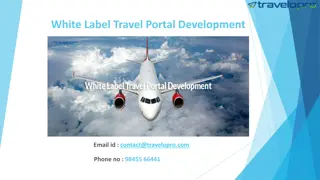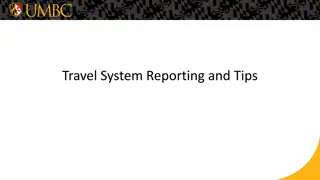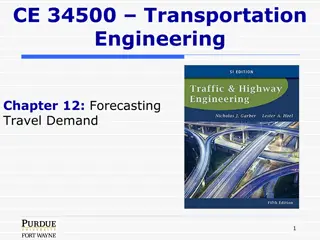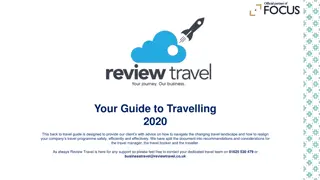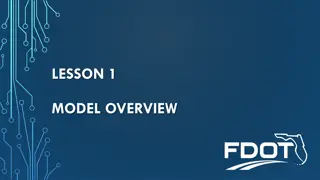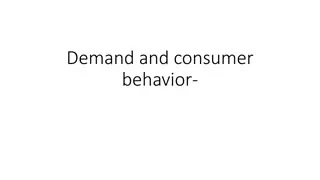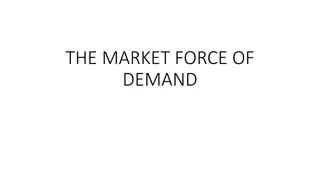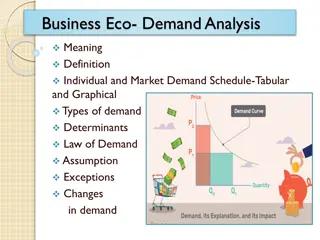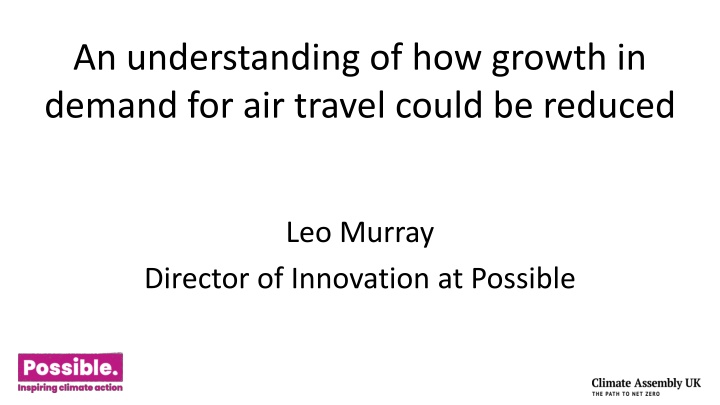
An understanding of how growth in demand for air travel could be reduced
Leo Murray, Director of Innovation at Possible, shares strategies to combat the increasing demand for air travel. Discover practical methods to reduce environmental impact and make sustainable choices for the future.
Download Presentation

Please find below an Image/Link to download the presentation.
The content on the website is provided AS IS for your information and personal use only. It may not be sold, licensed, or shared on other websites without obtaining consent from the author. If you encounter any issues during the download, it is possible that the publisher has removed the file from their server.
You are allowed to download the files provided on this website for personal or commercial use, subject to the condition that they are used lawfully. All files are the property of their respective owners.
The content on the website is provided AS IS for your information and personal use only. It may not be sold, licensed, or shared on other websites without obtaining consent from the author.
E N D
Presentation Transcript
An understanding of how growth in demand for air travel could be reduced Leo Murray Director of Innovation at Possible
Forecast growth in number of flights must be reduced to meet Net Zero target Technology improvements are essential but even if we are optimistic, these won t be enough on their own to fix problem Experts agree that we cannot achieve Net Zero if demand for more flights is allowed to grow without any constraints The government s official advisors the Committee on Climate Change say that air travel can grow, but by no more than 25% The government forecasts that demand for flights will grow by about twice as much as this (50%) to 2050
Policy options for managing demand for air travel: key challenges Whatever happens, flying has to become more expensive Generous tax breaks have kept the cost of flying artificially low relative to other travel options People have become accustomed to cheap flights International nature of air travel makes national policy tricky The United Nations global regulator responsible for decarbonising air travel is not doing their job properly
Taxing air travel: fuel duty International jet fuel has been completely untaxed since 1944 Chicago Convention was introduced to boost air travel The Convention is widely seen by governments as legally blocking any moves to tax jet fuel For comparison, taxing jet fuel at the same rate as UK fuel duty on petrol at the pump would add 43 to the price of a return ticket to Barcelona, or 200 to New York and back
Taxing air travel: VAT Plane tickets are also 0% rated for VAT, alongside items like wheelchairs and baby clothes For comparison, items like tampons and solar panels pay a reduced rate of 5% VAT, while bicycles pay the full 20%
Taxing air travel: Air Passenger Duty The UK charges Air Passenger Duty (APD) on most tickets for flights departing from the UK Almost all passengers pay the reduced rate of 13 for short haul economy class travel, or 78 for long haul APD raised just over 3.6 billion for the Treasury in 2018/19 But APD would need to raise three times as much to make up for VAT & fuel duty exemptions Public purse effectively out of pocket by 7.4 billion per year
Carbon offsetting: overview Carbon offsetting is the practice of increasing emissions from one source while paying for them to be reduced by the same amount elsewhere, in theory neutralising the new emissions Carbon offsetting is preferred by industry as a cheaper and easier alternative to reducing emissions from air travel itself Evidence that offsetting actually works reliably is very poor
Carbon offsetting: plans The United Nations global regulator is planning to introduce a global offsetting scheme for air travel called CORSIA The scheme is intended to offset only the planned growth in carbon emissions from air travel from 2020 onwards a goal that is not aligned with keeping warming below 2 C CORSIA is expected to add a few pence to the price of a typical short haul ticket in 2030, and 1 to long haul
Carbon Pricing: overview This is where businesses pay for permits to emit carbon, with the price set so that the upper limit of emissions is capped Flights within Europe are subject to the EU Emissions Trading Scheme (ETS), which adds a carbon price of around 1-2 to a typical ticket price today The aviation industry is lobbying for the ETS to be scrapped for flights when CORSIA offsetting scheme is introduced
Carbon Pricing: future projections Even though the government includes an escalating carbon price that reaches 221 per tonne in 2050 in their forecasts, they predict that flying will still grow by around 50% by 2050 So, additional policy measures to limit demand growth to 25% are needed even if this carbon price happens But there are in fact no policy plans to introduce this carbon price, so flying will grow by even more than 50% without it
Managing demand by increasing Air Passenger Duty Pros As the only existing tax levied on air travel, the simplest policy option for managing demand would be to increase APD Changes can be made easily and immediately Cons APD rates do not match emissions as closely as a carbon price would APD is levied on passengers not planes, so does not incentivise airlines to fly more efficiently
Managing demand through airport capacity constraints Pros Existing UK airport capacity is sufficient to handle entire allowed 25% increase in flights, with no further expansion needed considerably more than 50% Cons If Heathrow gets a third runway, airport capacity elsewhere would need to be reduced by 10% to stay within the safe limit - equivalent to closing Manchester airport Current expansion plans across all UK airports would increase total capacity by
Managing demand with a Frequent Flyer Levy A levy on frequent flyers could replace Air Passenger Duty o Low or zero tax for one flight per person per year o Increasing amounts of tax for each additional flight within a 12 month period o Most people unaffected or better off o Shifts rising tax burden onto those who fly the most
Demand management through increased prices - fairness Meeting Net Zero target means some flights must be stopped in the future, and this means that overall the cost of flying must rise Relying on Air Passenger Duty increases, carbon pricing or airport capacity constraints would mean most of the reduction in flights to 2050 comes from those on below average incomes, who rarely fly currently Using a Frequent Flyer Levy instead would mean most of the reduction in flights comes from those on above average incomes who fly very often
Concluding thoughts UK airport expansion is not consistent with Net Zero goal Price increases are needed, but most options would hit lower income flyers hardest A Frequent Flyer Levy could be an effective way to manage growth in demand for flights within safe limits, while protecting access to some air travel for all income groups Legislating a FFL may be hard as most politicians and other power holders are in the frequent flyer minority themselves




